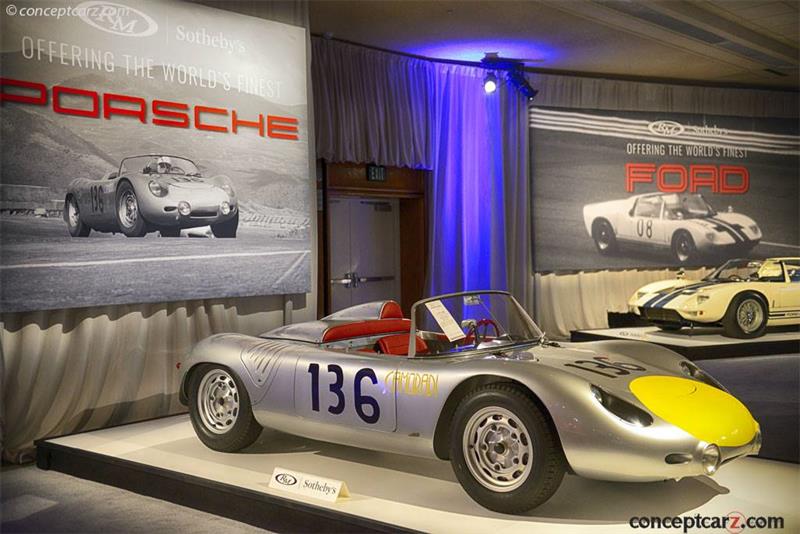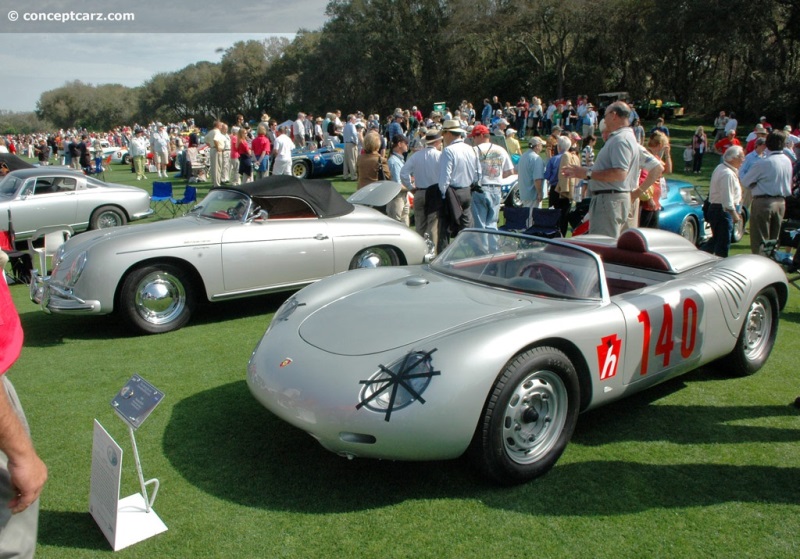The mid-engine, air-cooled Porsche Type 550, the company's first purpose-built competition car, was built from 1953 to 1956 with 90 examples constructed. They were very successful in the 1.1- and 1.5-liter classes, and were powered by the Type 547 dual-overhead-cam flat-four engine, later renamed the Carrera motor after its success in the Under 1,500cc Class at the 1954 Carrera Panamericana road race. 
Spyder
Chassis #: 718-041
View info and historyPorsche-based racing specials had been successfully competing in various racing arenas since the early 1950s. This enthusiasm and success convinced the Zuffenhausen team to focus on a proper racing machine. Ernst Fuhrmann worked on designing a competition engine, designated project 547. Wilhelm Hild worked on the chassis, designated project 550. The exterior design was similar to the Glockler special of the early 1950s with a low and aerodynamic design and mid-engine configuration. The ladder frame was formed from steel tubes and six cross members, with the suspension and brakes similar to the one found on the production Porsche models, albeit strengthened and improved to handle the stresses of competition. Power was from a modified 356 engine placed between the rear axle and the driver. The first 550 in roadster configuration made its racing debut at the Eiffel Races at the Nurburging, where it battled through poor weather and a faulty carburetor to its first victory. The Fuhrmann-designed engine was not yet ready, so it was powered by a tuned Overhead Valve, 356 1500 Super engine. Two coupe body examples were entered at LeMans in the 1101 - 1500cc class where they easily won the class and finished 15th and 16th overall. Again the Fuhrmann-designed engine was still in development, and work would continue through the year. The new 547 engine was given a larger bore and shorter stroke than the 356-based engine, with a displacement of 1,498cc and two overhead camshafts per cylinder. For the third 550, it was given a new roadster body designed by Erwin Komenda, the new Fuhrmann-designed engine, and a more refined tubular frame. The completed car was built in time for the 1953 Hockenheim Grand Prix. Before the race, Hans Herrmann drove the car during practice and despite the improvements, the car was unable to achieve the speeds of the 550 Coupe. A week later, it was driven by Hans Stuck to a third-place finish in a hillclimb. 
Spyder
Chassis #: 718-052The 1953 season had been about development and testing. Going into the 1954 season, Porsche announced the 550 RS Spyder would be made available to privateers. This announcement was made at the Paris Motorshow with the show car being the fifth 550 constructed. Differences of this car compared to the prior cars included a convertible top, lockable glove compartment, two seats, and a full-width windscreen with wipers. Changes, modifications, and updates would continue through much of the 550's racing career. Porsche spent much of 1954 fine-tuning the 550 before finally making them available to privateers near the end of the year. 1956 brought about the 550A which had a similar appearance to the prior 550, but with several important changes included a more advanced spaceframe chassis and a 547 engine tuned to produce over 130 horsepower. Next came the 550A RS Spyder followed by the final evolution of the Carrera-based racing spyder, introduced in January of 1960, the RS 60 - officially classified as a Type 718. Changes from the preceding model included larger brakes, 15-inch wheels, an independent wishbone rear suspension, and a wider cockpit. The wheelbase was enlarged by four inches over the 718 RSK, an advanced suspension installed, and smaller wheels fitted, resulting in more predictable and preferable handling dynamics. Power continued to be sourced from a variety of four-cam engines. Exterior modifications were performed by Karrosserie Wendler, which included changes to the nose, head fairing, and doors. A framed windscreen and luggage platform were added to comply with mandates by the FIA. 70 examples of the 550 RS Spyer were built and eighteen RS 60 examples, with 14 of those sold to privateering customers. The customer car chassis numbers began with 718-051 with the factory Works cars ranging from 718-041 to 718-044. The four Works cars were given different specifications including separate left and right front torsion bars in a similar configuration to the 718/2 Formula 2 cars. They had integrated driving lamps and a flat-black dashboard-mounted with an exposed fuse box. The cars built in 1960 were known as the RS 60 Spyder and those built a year later to the same specification were labeled RS 61 Spyder. A coupe version was also developed, along with an open car known as the W-RS whose racing career would span into 1964 when it was replaced by the 904. The W-RS had a larger two-liter engine and eventually a flat eight-cylinder 2.0-liter Type 771 unit producing 240 horsepower. A W-RS finished 8th at Le Mans in 1963 and won the European Hill Climb Championship title in 1963. 
Spyder
Chassis #: 054 or 55The 1.6-liter engine of the RS 60 produced 160 horsepower and helped carry the Porsche to victory at the 1960 12 Hours of Sebring driven by Hans Hermann and Olivier Gendebien. Hermann, Jo Bonnier, and Graham Hill won the Targa Florio with Hermann and for the third year in a row, Porsche successfully defended their European Hill Climb Championship. A year later, the RS 61 would successfully defend the championship time for another year for Porsche. Porsche would go on to win a European Hill Climb Championship every year until 1982, a total of 42 titles. The Porsche RS 60 finished second and fourth at the Nurburgring. For LeMans, Porsche entered a team of four specially prepared cars consisting of three works RS60s (718-042, 718-043, 718-044) and a Carrera Abarth GTL (1001). The three RS60s were powered by the Type 547 engine, with chassis number 718-043 and 718-044 being fitted with larger 1,606cc versions. This allowed Porsche to move into the two-liter class, which permitted a larger 100-liter fuel tank. The bodywork of the RS60 was modified with a higher rear deck lid and tall Plexiglas side windows faired into the new FIA-mandated windshield, preserving the Spyders low and aerodynamic appearance. The factory works cars were clocked as high as 145 mph whereas the standard RS60 privateer cars could barely achieve 138 mph. Similar to the 1959 race, the works Porsches were plagued by engine trouble during the 1960 LeMans race, and both 718-043 and 718-044 failed to finish the race. The team would finish twelfth overall and second in class.
Spyder
Chassis #: 054 or 55The Porsche RS 60, with its spaceframe chassis, was an important step in Porsche's endeavors to win at LeMans. They took the Porsche marque from being Class to Overall contenders in many events and were the final evolution of Porsche's competition four-cam Spyder, a legendary series of sports cars that can be traced back to the original Type 550 of 1953.
by Daniel Vaughan | Mar 2020
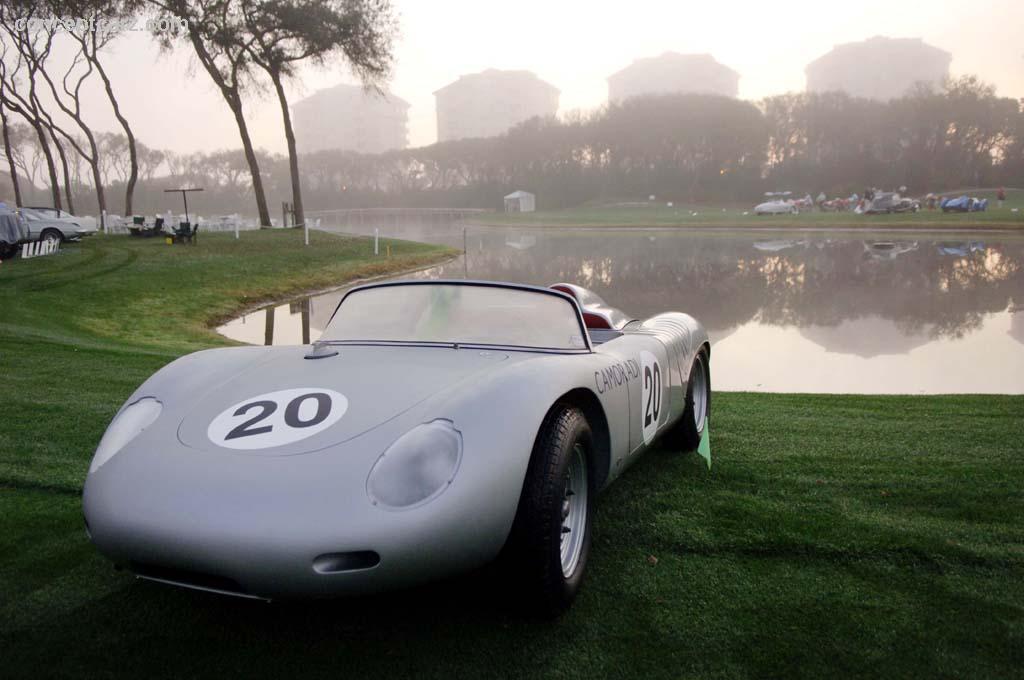
Spyder
Chassis #: 718-041
View info and history
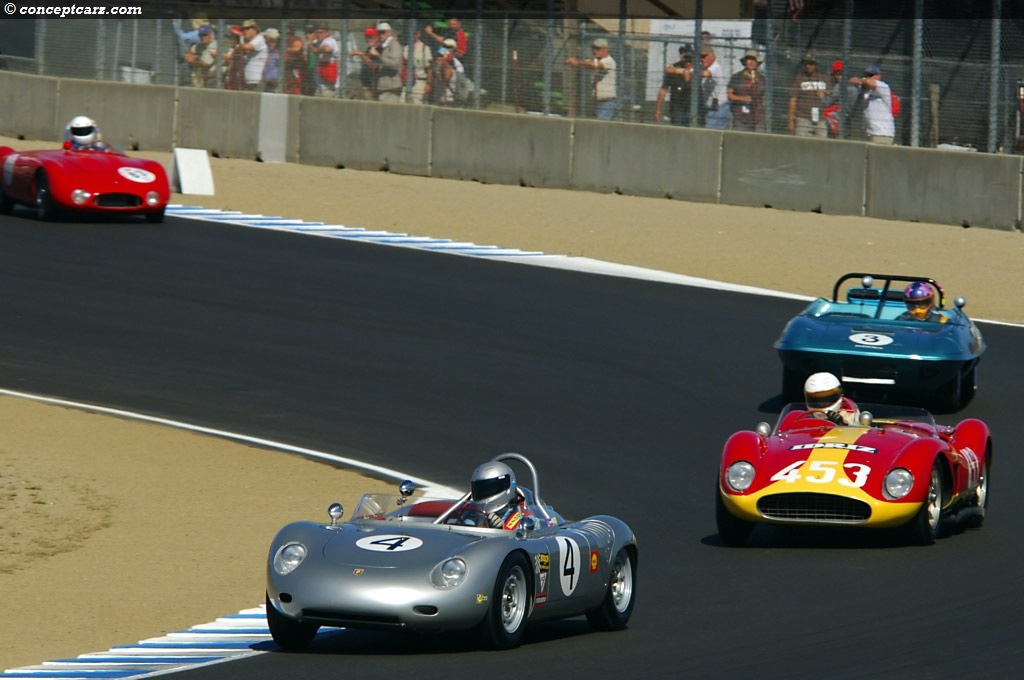
Spyder
Chassis #: 718-052
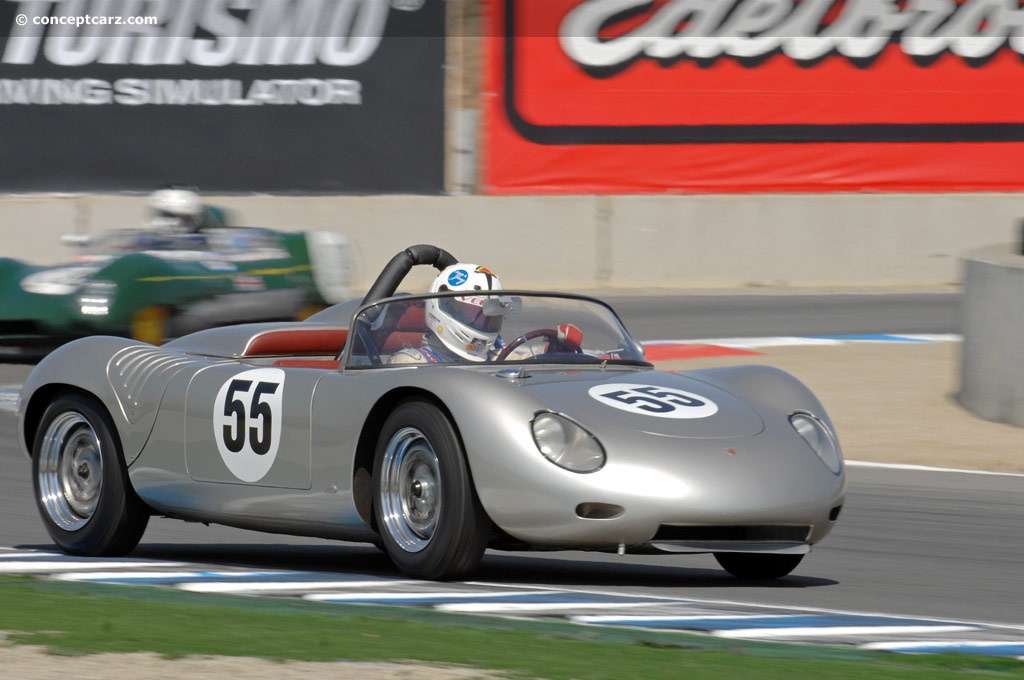
Spyder
Chassis #: 054 or 55
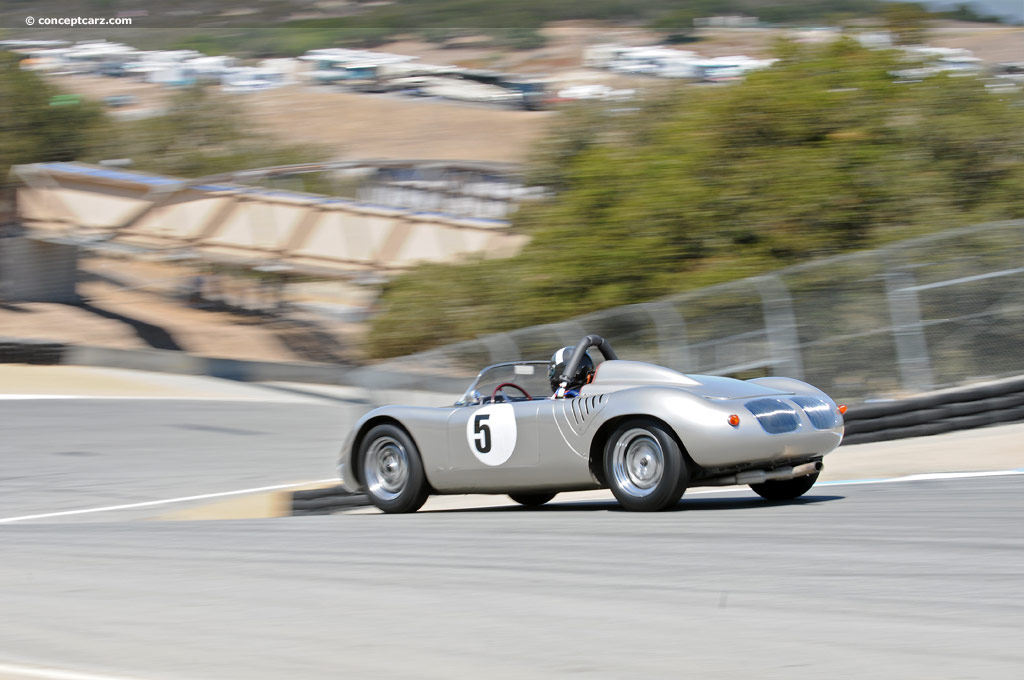
Spyder
Chassis #: 054 or 55
by Daniel Vaughan | Mar 2020
Related Reading : Porsche 550/718 Sports Racing Cars History
After World War II, Walter Glockler of Frankfurt was one of the first to own a Volkswagen dealership. He was an amateur motorcycle racer that had ventured into auto racing once he had financial backing from his successful dealership. One of his engineers working at the dealership had worked on prewar Adler sports cars and had amassed a wealth of racing knowledge and expertise. In 1948 they modified....
Continue Reading >>
Continue Reading >>
1959/60 Porsche 718 RS 60 Spyder
Automobile sport was part of the picture for the fledgling Porsche sports car firm from the first. The 356 quickly became popular around the world, in the hands of private drivers with sporting ambitions. New racesports cars were developed in Zuffenhausen at the beginning of the fifties the1.5 liter 550 Spyder proved a shark in the goldfish bowl against larger-displacement competitors in major races.....
Continue Reading >>
Continue Reading >>
1960 Porsche 718/RS60 Vehicle Profiles
Recent Vehicle Additions
Related Automotive News

Historic Lotus 19 Raced By Moss, Hill, Ireland And Clark Comes To The Open Market For The First Time In 57 Years
1960 Lotus 19 Monte Carlo, Chassis 953
Raced by some of the greatest British racing drivers
Jim Clark won in this car at Oulton Park in 1964
Signed by Sir Stirling Moss and the last car driven by him as a professional race driver
First raced in 1...

Ferrari Museum Celebrates Scuderia Ferrari's Landmark Anniversary With The '90 Years Exhibition'
Hypercars the story of Ferraris technological evolution told through milestone cars
Maranello, xx May 2019 – One of the great iconic names in motorsport with the power to unite an entire country and millions of fans from all over the...

Driven by the Greats: 1956 Ferrari 290 MM Leads RM Sotheby's Los Angeles Auction
FERRARI HEADLINES 40 ECLECTIC CARS OFFERED AT THE PETERSEN AUTOMOTIVE MUSEUM
RM Sothebys announces headline Ferrari entry for Petersen Automotive Museum Auction on 8 December
Ferrari 290 MM was campaigned by Scuderia Ferrari for 1956 and...
Scuderia Ugolini: 1959 Formula One Season
While the name Ferrari is recognized the world-over, Ugolini, on the other hand, is only a name recognized by those very knowledgeable of motor racing and football. However, the name is nearly as vitally important to the world of motor sport. In 1959,...
Luigi Musso: Talented, Tempting and Troubled
Following Alberto Ascaris back-to-back titles in 1952 and 1953 there have been no Italian Formula One World Champions. While there has been a great amount of hope throughout the years, Italians have been left without a World Champion. Perhaps, it could...


























